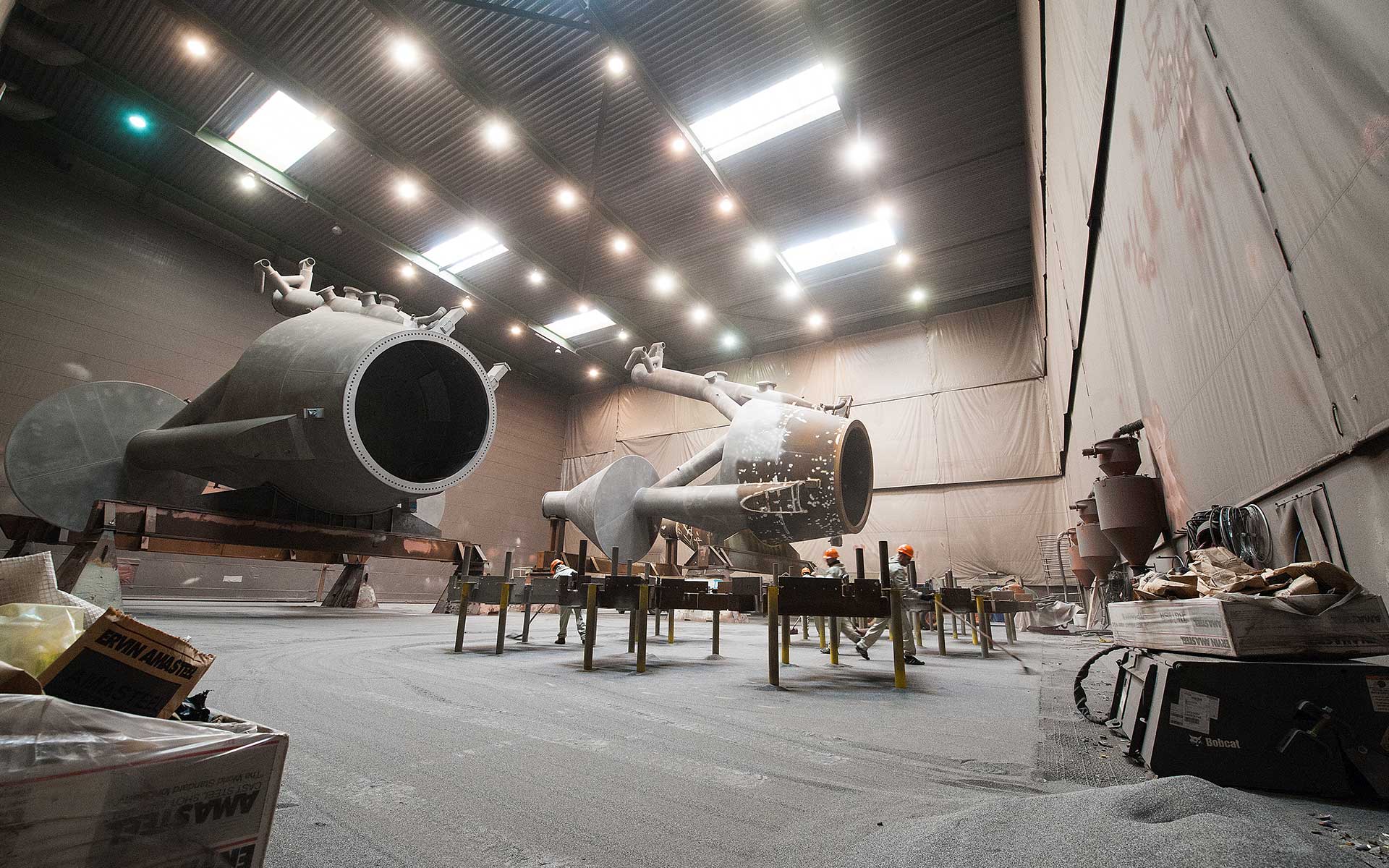Do you need help?
Blasting
DanGard sandblasts and varnishes components and constructions in all shapes and sizes. Small and large steel structures such as:
- Wind turbine components
- Wind turbine towers
- Stairs
- Railings
- Gas tanks
- Machine parts
- Containers
- …and much more.
We use the most environmentally friendly abrasives for the task and ensure the best waste management with a minimum of waste. As far as possible, the waste is recycled again – we have a strong focus on recycling.
Sandblasting/grit blasting is an important pre-treatment method for the subsequent surface treatment to achieve optimal adhesion and correct corrosion class.
At DanGard, steel grit is primarily used as an abrasive. Steel grit removes rust, oxide scale, and discolouration. Steel grit makes a rough surface, which is suitable for painting, glueing or plastic coating. The advantage of steel grit is, among other things, that it can be recycled.
The degree of sandblasting is defined in ISO 8501-1 and is as follows:
Sa 1: Light sandblasting
Sa 2.5: Very thorough sandblasting
Sa 2: Thorough sandblasting
Sa 3: Sandblasting to pure steel


Sling cleaning
When sling cleaning steel blanks, rotating wheels sling the abrasives towards the blanks instead of using compressed air. Sling cleaning is increasingly used due to large energy savings compared to sandblasting with compressed air.
Today, we have several types of sling cleaning systems for both large and small items.
Advantages of sling cleaning:
- Good economy
- Saves energy compared to sandblasting with compressed air
- Saves expensive person-hours
- Protects the environment
- Provides a good finish.

